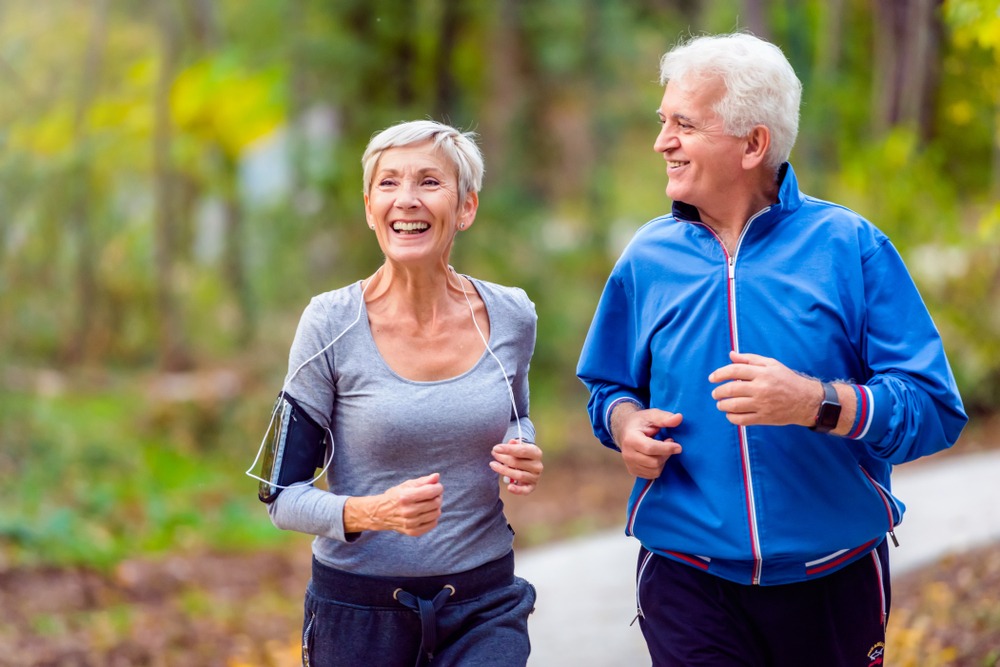As you age, exercise becomes increasingly important to improve heart health, increase bone density, control blood sugar and blood pressure, and manage weight. One area of concern when aging is the impact exercise has on joints. A joint is any place in the body where two bones meet, and they are made of cartilage, tendons, ligaments, and nerves. You probably don’t think about your joint health until you begin to feel discomfort and pain. If you were an athlete or engaged in higher-impact exercises, you may be more prone to joint problems. Some people also have a genetic predisposition to arthritis. Having joint issues does not mean giving up activity if you choose wisely.
Why Joint Health is Important
First, let’s review which joints are more prone to age-related degenerative problems like arthritis as you age. Knee joints can pose particular problems because they are directly related to standing, walking, and climbing. Over time, the cartilage surrounding the knees begins to deteriorate. Other joints prone to arthritis and muscle pain are the hips, ankles, hands, and spine. On a practical day-to-day level, joint health is important for:
Mobility and Function
If you are already beginning to experience joint pain, you know that it can impact your flexibility and desire to move. Mobility allows you to function independently and perform activities like walking, reaching, lifting, and bending.
Preserving Independence
Healthy joints help reduce the risk of falls, prevent costly surgeries, and allow you to perform daily activities and participate in activities you enjoy. The more active you are, the better your cardiovascular health, bone density, and ability to manage chronic disease will be.
Injury Prevention
Joints don’t operate independently of the tissue surrounding them. Strong joints help prevent ligament, muscle, and tendon injuries.
Pain Management
Almost 50% of older adults have been diagnosed with arthritis, so chances are you may be one of them. Arthritis is not curable, and managing arthritic pain is part of continuing to be active. However, contrary to previous thought, exercise helps ease arthritis pain and stiffness. Talk to your doctor before beginning any pain medication for arthritis.
Posture
You may not associate joint health with posture, but healthy joints contribute to proper alignment and biomechanics. Good posture reduces the risk of injuries and chronic pain conditions.
What is the Definition of Low-Impact?
Your knees, in particular, absorb significant pressure with every step, typically one-and-a-half times your body weight. For runners, the impact can be about five times their body weight. It is no wonder runners have so many knee problems!
Not all low-impact activities are the same, and we will discuss those in the next section. You need to evaluate what low-impact feels like for you and adjust accordingly. There is a fine line between engaging in beneficial activities and those that may be causing additional damage.
Examples of Low-Impact Exercises
Yoga
Many people are intimidated by the idea of yoga, and it is possible to hurt yourself if you try poses that are too advanced. You can think of yoga as stretching but with the added component of mindful breathing. One significant advantage of yoga for older adults is that it focuses on balance, which can help prevent falls. Yoga increases flexibility, strengthens bones, decreases joint pain, and can improve mood.
Tai Chi
Tai Chi is a low-impact, slow-motion exercise where you go through several motions without pausing. As you move, you focus on your breathing and paying attention to your body movements. Tai Chi is extremely good for balance and flexibility.
Swimming
Swimming is the perfect activity for older adults, as long as you can swim and have access to a pool! Swimming puts less stress on joints while improving flexibility and cardiovascular health. At The Chateau, we have a beautiful pool awaiting you!
Chair Exercises
Chair exercises are perfect for people with physical limitations or who are slowly getting back into movement. You can work on strength and flexibility without placing too much stress on joints.
Rowing
Rowing places some stress on the knees but is a good, low-impact, safe, and effective exercise.
Stationary Cycling
Stationary cycling can be a great and safe exercise that minimizes joint impact while improving cardiovascular health. Just be mindful of the tension you use since the harder it is to pedal, the more pressure on your knee and hip joints.
Walking
Walking has many benefits for seniors, including improving cardiovascular health, bone density, strength, and mood. Walking is recommended for people with arthritis since it can improve joint flexibility and strength. Be careful, however, on uneven terrain, and use walking sticks if necessary for balance.
Protect Your Joints While Improving Your Health
Activity can be the fountain of youth, but protecting your joints while simultaneously improving joint health is a tricky balance. Always consult your physician before starting a new exercise, but don’t be afraid to increase your activity level safely. Your joints will thank you.
About The Chateau
The Chateau by Highlands is an age exclusive community tailored for those 55 or older, offering a vibrant lifestyle without the burdens of home ownership. Located in the serene hills of Southern Hall County, it’s close to Little Mulberry Park, Reunion Country Club, and exquisite dining options, ensuring a blend of relaxation, leisure, and convenience. With a focus on fostering connections among residents and the surrounding neighborhood, The Chateau provides maintenance-free living, rich in amenities and social opportunities, making every day an adventure in a welcoming and elegant environment. For more details, visit The Chateau.

